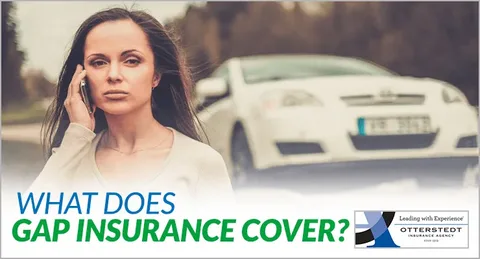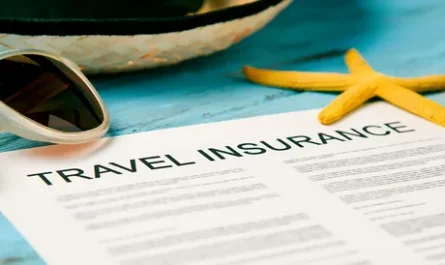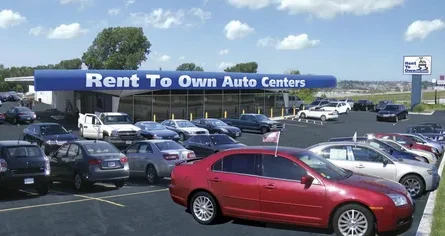If you’ve ever purchased a car with financing or a lease, you may have heard of GAP insurance. But what exactly is it, and how can it protect you financially? This comprehensive guide covers everything you need to know about GAP insurance, including how it works, who needs it, costs, benefits, and when it makes sense to purchase it.
What Is GAP Insurance?
GAP insurance (Guaranteed Asset Protection) is a type of insurance policy designed to cover the difference—or “gap”—between the current market value of your car and the amount you still owe on your loan or lease if your car is totaled or stolen.
Since cars depreciate rapidly, the value of your vehicle can drop below what you owe on your loan. If your vehicle is lost or declared a total loss due to an accident or theft, your regular auto insurance policy will only pay you the actual cash value (ACV) of the car. GAP insurance ensures that you aren’t left paying the difference out of pocket.
How Does GAP Insurance Work?
Let’s say you purchased a car for $30,000, but after a year of ownership, the car’s value drops to $22,000 due to depreciation. Unfortunately, your car is totaled in an accident, and your regular auto insurance policy only covers the current market value of the car—$22,000.
If you still owe $26,000 on your auto loan, you’re left with a $4,000 gap between what your insurer pays and what you owe the lender. Without GAP insurance, you’d have to pay this difference out of pocket. However, with GAP insurance, the policy covers this $4,000, protecting you from financial hardship.
Who Needs GAP Insurance?
GAP insurance isn’t for everyone, but it can be a lifesaver in certain situations. Here are some scenarios where GAP insurance is especially useful:
1. Buying a New Car with a Loan
New cars depreciate quickly—losing as much as 20-30% of their value in the first year. If you financed the purchase, you may owe more than the car’s value at some point, creating a gap that GAP insurance can cover.
2. Leasing a Vehicle
Leased vehicles almost always come with GAP insurance requirements. If you lease a car, you’ll likely need a GAP policy to protect both you and the leasing company.
3. Low Down Payment on a Car Loan
If you made a small or no down payment, it takes longer to build equity in the car, increasing the likelihood of owing more than the car’s value in the first few years.
4. High Interest Rates
If your car loan comes with a high interest rate, your monthly payments may cover interest more than principal, keeping your loan balance higher than the car’s value for an extended period.
5. Vehicles That Depreciate Rapidly
Some car models, such as luxury vehicles or electric cars, may depreciate faster than others, making GAP insurance a smart choice.
Benefits of GAP Insurance
1. Financial Protection
GAP insurance offers peace of mind by covering the difference between what you owe and what your standard insurance policy pays in case of a total loss.
2. Avoid Out-of-Pocket Expenses
Without GAP insurance, you could be stuck paying thousands of dollars out of pocket, especially if your car is totaled early in the loan term.
3. Affordable Coverage
GAP insurance is relatively inexpensive, particularly when compared to the potential cost of paying the gap yourself.
4. Required for Leased Vehicles
If you lease a car, GAP insurance may be required by the leasing company to protect their financial interests.
How Much Does GAP Insurance Cost?
The cost of GAP insurance varies depending on several factors, including:
- The price of the vehicle
- The loan amount
- Your insurance provider
- Your location
Typically, GAP insurance costs between $20 and $50 per year if purchased through a car insurance policy. If you buy it from a dealership, you may pay between $400 and $700 for the life of the loan or lease. It’s often cheaper to add GAP insurance to your auto insurance policy rather than buying it directly from the dealership.
How to Buy GAP Insurance
There are several ways to purchase GAP insurance. Here are the most common options:
1. Through Your Auto Insurance Company
Many car insurance providers offer GAP insurance as an add-on to your existing policy. This option is often the most affordable and convenient.
2. From the Car Dealership
Dealerships typically offer GAP insurance when you purchase or lease a vehicle. However, this option tends to be more expensive than buying through an insurance company.
3. Through a Bank or Credit Union
Some lenders offer GAP insurance when you finance your vehicle through them. Check with your bank or credit union for their GAP coverage options.
How to File a GAP Insurance Claim
If your car is totaled or stolen, here’s how to file a GAP insurance claim:
- Report the Loss to Your Auto Insurance Provider
- Inform your regular auto insurer immediately after the accident or theft.
- Contact Your GAP Insurance Provider
- Notify your GAP insurance provider about the incident.
- Submit Required Documentation
- Provide documentation, including the insurance payout statement, loan or lease agreement, and any additional paperwork requested.
- Loan Payment Verification
- Your GAP provider will verify the loan balance with your lender.
- Claim Payout
- If your claim is approved, the GAP insurance provider will cover the difference between the auto insurer’s payout and the loan balance.
Is GAP Insurance Worth It?
GAP insurance is worth considering if:
- You financed or leased a new car with little or no down payment.
- Your car depreciates quickly, leaving you with a loan balance higher than the car’s value.
- You live in an area with a higher risk of accidents or theft.
However, if you have a large down payment or plan to pay off your loan quickly, you may not need GAP insurance for the entire loan term.
How Long Do You Need GAP Insurance?
GAP insurance is most beneficial during the first few years of car ownership when the car’s value depreciates rapidly. Once the loan balance is less than the car’s market value, you can cancel GAP insurance to save on premiums. Regularly reviewing your loan balance and the car’s value will help you determine when to drop GAP coverage.
Alternatives to GAP Insurance
If GAP insurance doesn’t seem like the right fit, there are a few alternatives to consider:
1. New Car Replacement Coverage
Some insurers offer new car replacement coverage, which replaces your totaled car with a new one of the same make and model.
2. Loan/Lease Payoff Coverage
This type of insurance is similar to GAP coverage but pays a set percentage of your car’s value rather than covering the entire loan balance.
Conclusion
Protect Your Investment with GAP Insurance
Buying or leasing a vehicle is a significant financial investment, and GAP insurance ensures that you’re protected from unexpected losses. It fills the gap between your car’s depreciated value and the amount you owe on your loan, offering peace of mind in the event of an accident or theft.
Whether you’re financing a new car, leasing a vehicle, or driving a model that depreciates quickly, GAP insurance can save you from financial stress. Consider adding this valuable coverage to your auto insurance policy—or purchasing it from your dealership or lender—if your financial situation warrants it.
By understanding what GAP insurance is, how it works, and when it’s worth buying, you can make informed decisions that protect your wallet and your vehicle.



